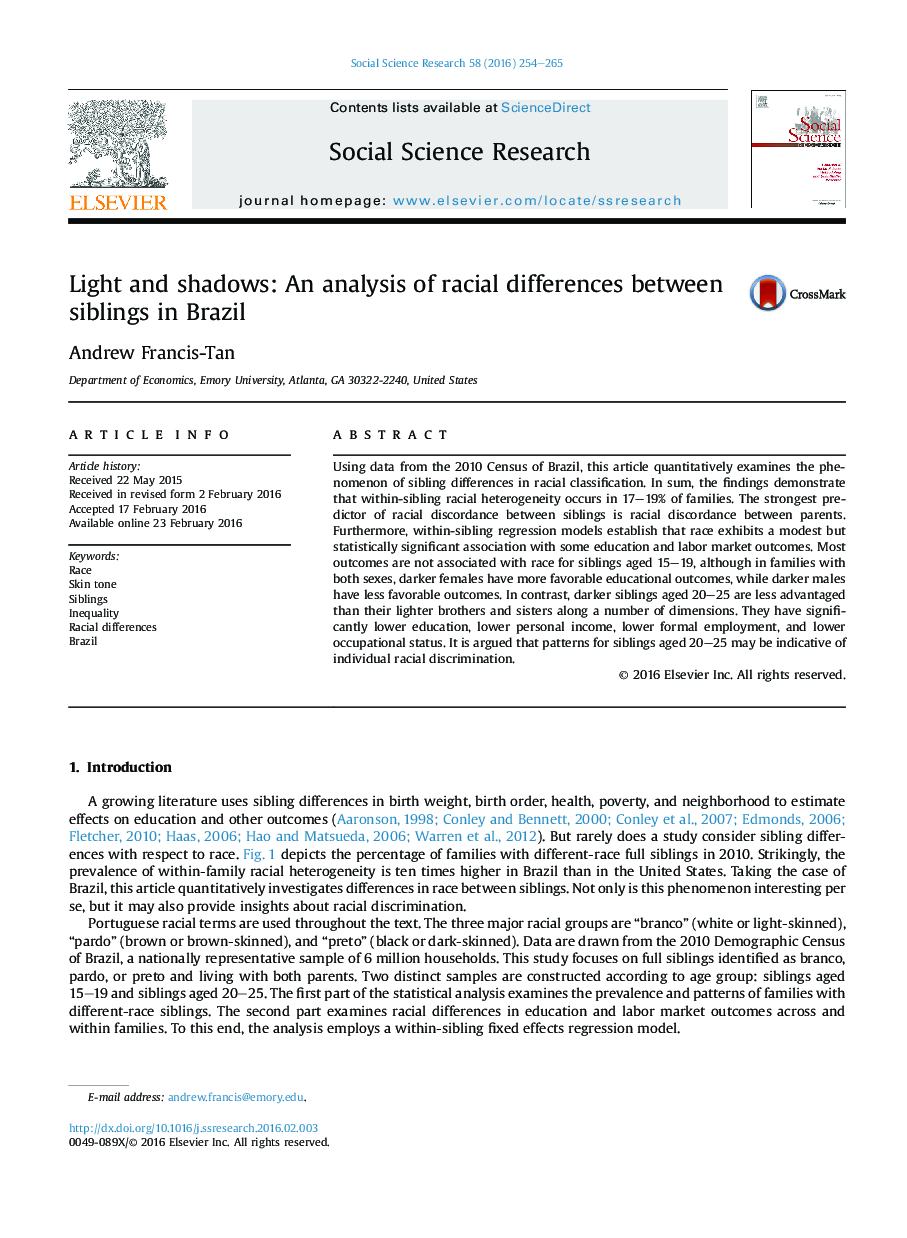| Article ID | Journal | Published Year | Pages | File Type |
|---|---|---|---|---|
| 955590 | Social Science Research | 2016 | 12 Pages |
•This article examines racial differences between siblings in Brazil.•Within-sibling racial heterogeneity occurs in 17–19% of families.•Such racial differences are correlated with education and labor market outcomes.•Estimates are modestly-sized and are more significant for siblings aged 20–25.•Patterns may be indicative of individual racial discrimination.
Using data from the 2010 Census of Brazil, this article quantitatively examines the phenomenon of sibling differences in racial classification. In sum, the findings demonstrate that within-sibling racial heterogeneity occurs in 17–19% of families. The strongest predictor of racial discordance between siblings is racial discordance between parents. Furthermore, within-sibling regression models establish that race exhibits a modest but statistically significant association with some education and labor market outcomes. Most outcomes are not associated with race for siblings aged 15–19, although in families with both sexes, darker females have more favorable educational outcomes, while darker males have less favorable outcomes. In contrast, darker siblings aged 20–25 are less advantaged than their lighter brothers and sisters along a number of dimensions. They have significantly lower education, lower personal income, lower formal employment, and lower occupational status. It is argued that patterns for siblings aged 20–25 may be indicative of individual racial discrimination.
